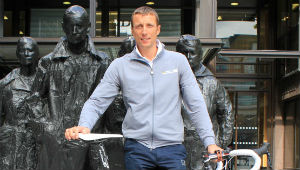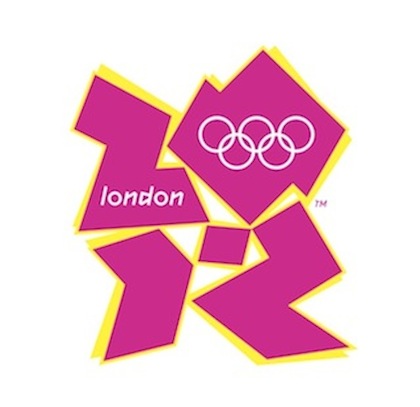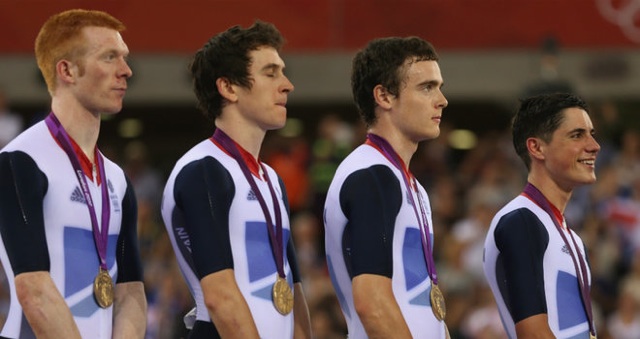Bradley Wiggins stormed to victory in the Olympic time trial not on the Team Sky-issue Pinarello Graal which has seen the Brit undefeated in long TTs through the WorldTour season, but on a custom machine commissioned by UK Sport.
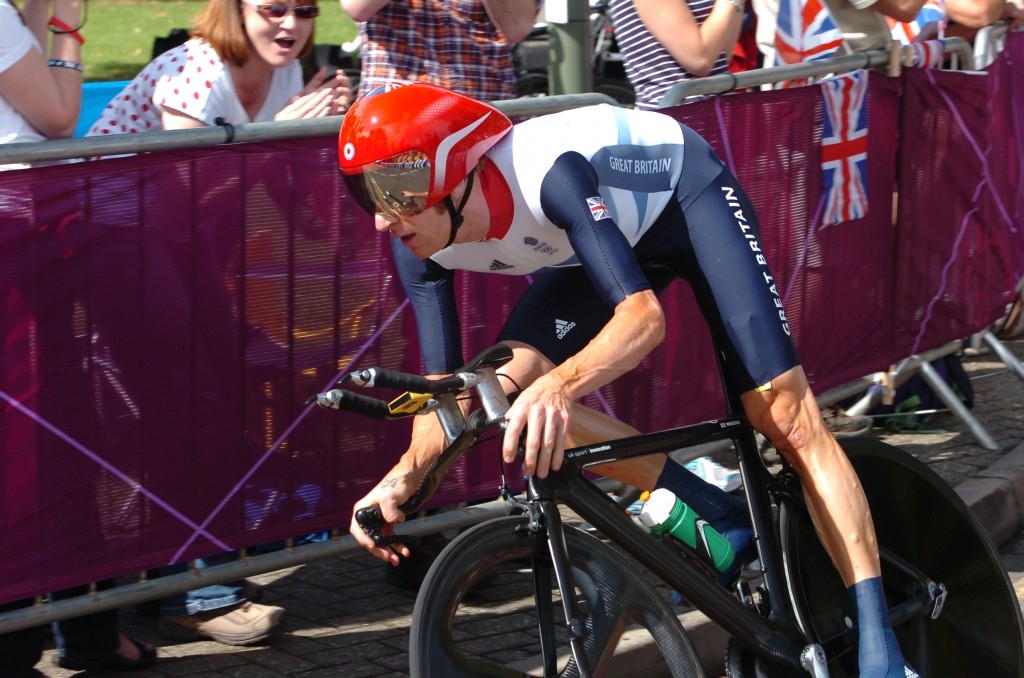
The bike is the fruit of British Cycling’s Secret Squirrel Club, the research and development team led by Chris Boardman. The multi-million pound operation attracted attention after Great Britain’s domination of track cycling at the Beijing Olympic Games in 2008 and has continued to seek out every inch of technological advantage for Team GB’s riders.
If Boardman is the headline name behind the project, then Dimitris Katsanis is perhaps its most important member. The former track racer, who last competed for his native Greece in 1991, is now a composites engineering expert and the director of Metron Advanced Equipment Limited, the company which builds Team GB’s bikes. Boardman and Katsanis have close ties, with the latter helping to design the Boardman Bikes AiR time trial frame.
Team GB’s riders have the choice of three machines for these Olympic Games – a road, track and time trial model – and all are named on the UCI’s list of approved models, under the name of Metron and with an approval date of 09.05.2012 – just 11 weeks before the Olympic Games.
UCI regulations state that all bicycles used in competition need to be available to buy within a year and that rule applies at the Olympic Games as well. All of the Secret Squirrel Club’s inventions are listed on the UK Sport website, complete with instruction on how to order, albeit with a warning that “the price of these items is in line with their specialist nature”.
If you need to know how much a Wiggins frame will set you back, then chances are it’s too much, although Boardman estimated the price of Sir Chris Hoy’s bike to be “about £15,000” in a recent interview with The Sun. Metron, British Cycling and UK Sport have little interest in becoming a mainstream bike manufacturer.

Wiggins dwarfs the compact and super-aero frame, which has a small frontal area to reduce contact with the wind. The frame weighs approximately 1kg and uses the super-skinny UK Sport Road/TT Fork and a 1″ steerer. Aero tube profiles and internal cable routing, kept as tidy as possible where exposed to reduce airflow disruption, and a chunky bottom bracket all combine to make a machine which is both as aerodynamic and stiff as possible.
Decals are kept to a minimum, with the stealthy black frame disturbed only by the words ‘UK Sport / innovation’ on the top tube, the UCI’s stamp of approval, and Wiggins’ name and the British flag on the seat cluster junction.
The bike isn’t completely new territory for Wiggins, however, with the 32-year-old using his trademark Osymetric chainrings, which claim to eliminate the dead spot in the pedal stroke, and a mechanical Shimano Dura-Ace groupset.
But if Wiggo’s helmet looks unfamiliar then that’s because it’s another UK Sport invention. The Aero Helmet, as its named on the UK Sport website, is reportedly manufactured by Kask and looks similar to the company’s stumpy Crono TT helmet that Wiggins uses when on Team Sky duty, albeit with a longer tail. The UK Sport lid comes with a choice of tinted, iridium and clear visors, while the Union Flag and the RAF roundel identify the helmet as one belonging to Wiggins.

Chris Froome, who took bronze, wasn’t on a UK Sport bike, instead riding the Pinarello Graal of Team Sky. The Tour de France runner-up did use the UK Sport frame and Aero Road Bars – “designed to be some of the world’s stiffest and most aero available” – for the road race, however, along with Wiggins and Mark Cavendish. Ian Stannard rode his Pinarello Dogma 2 and David Millar the Cervelo S5 of his Garmin-Sharp-Barracuda trade team.

Wiggins wasn’t the only rider aboard unidentifiable machinery for the time trial. Three-time world time trial champion Michael Rogers rides for Team Sky and was a key member of the squad that helped Wiggins to Tour de France victory in July, and like Wiggins, Rogers chose not to ride a Pinarello Graal, instead opting for this unbranded machine in the green and gold colours of Australia.

World time trial champion Tony Martin, who rides for Omega Pharma-QuickStep when not on national duty, rode a Specialized Shiv to silver. The German also wore the new S-Works + McLaren TT helmet, which was unveiled ahead of the Tour de France. The aerodynamic helmet comes after Specialized’s initial collaboration with McLaren for the Venge road bike.
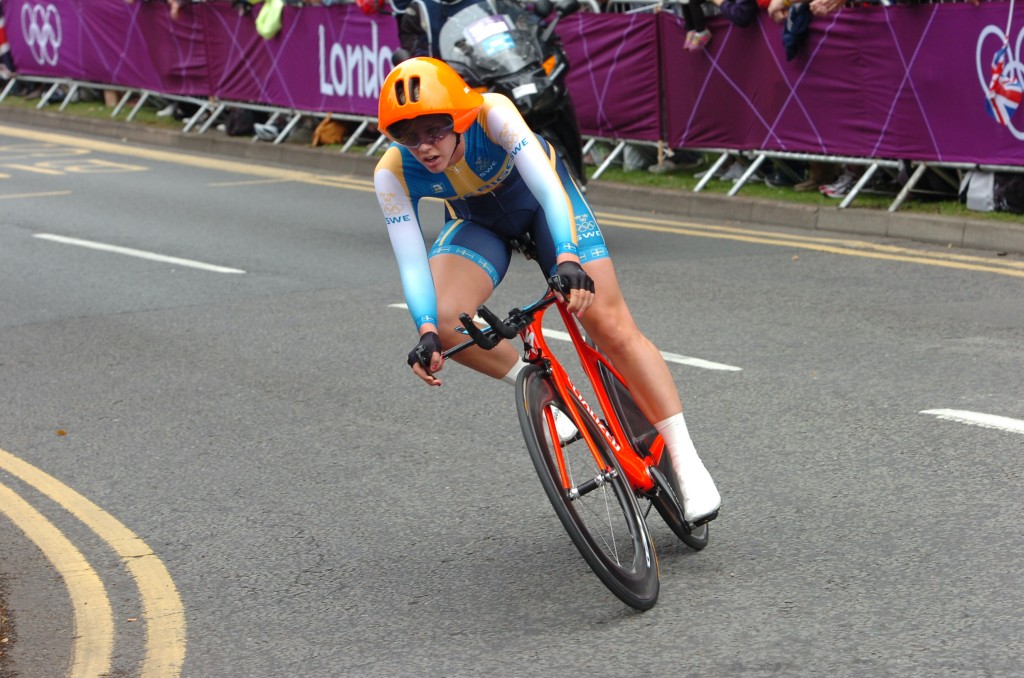
Sweden’s Emilia Fahlin modelled the new Tempor time trial helmet from POC in the women’s time trial. The Swedish manufacturer has, until now, focussed on the off-road and snow markets.
The helmet was developed in conjunction with Gustav Larsson, time trial silver medallist at the Beijing Olympic Games, and uses a conceptual approach which treats the rider as one body mass, rather than isolating the head from the rest of the body. As a result the helmet has a wide brim, with a long tail which flows down onto the curve of the rider’s back.
The lid comes in two colours (orange and black, so the Darth Vader look is an option) and two sizes (M-L, 56-58cm and L-XL, 59-62cm), and costs €475 from the POC website.
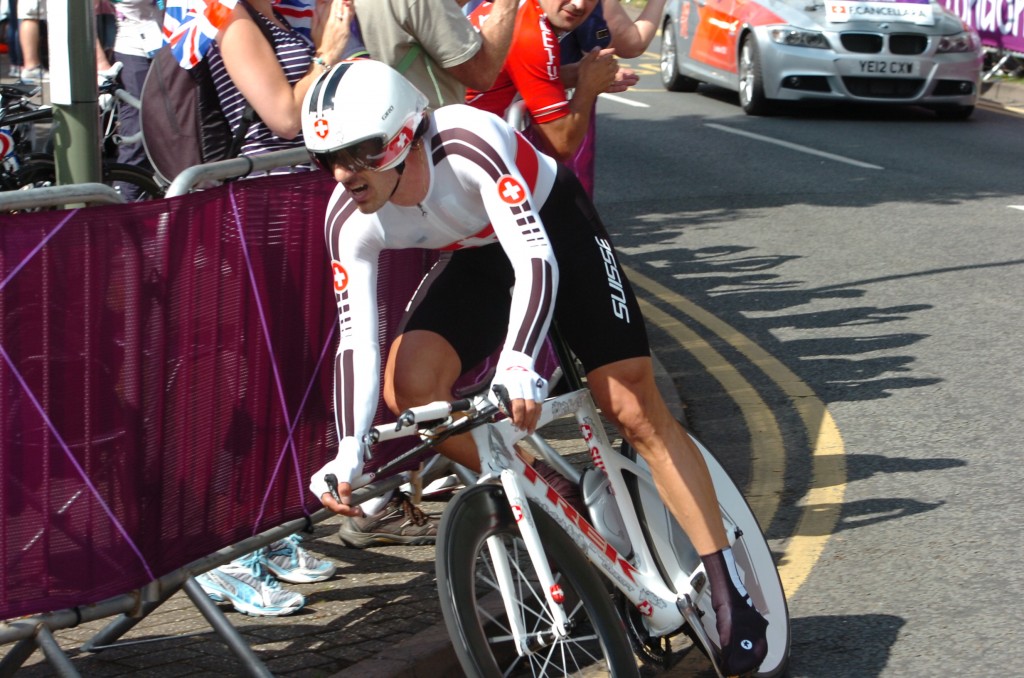
Defending champion Fabian Cancellara remained loyal to Trek, riding one of the American firm’s Speed Concept time trial machines in Swiss livery.


